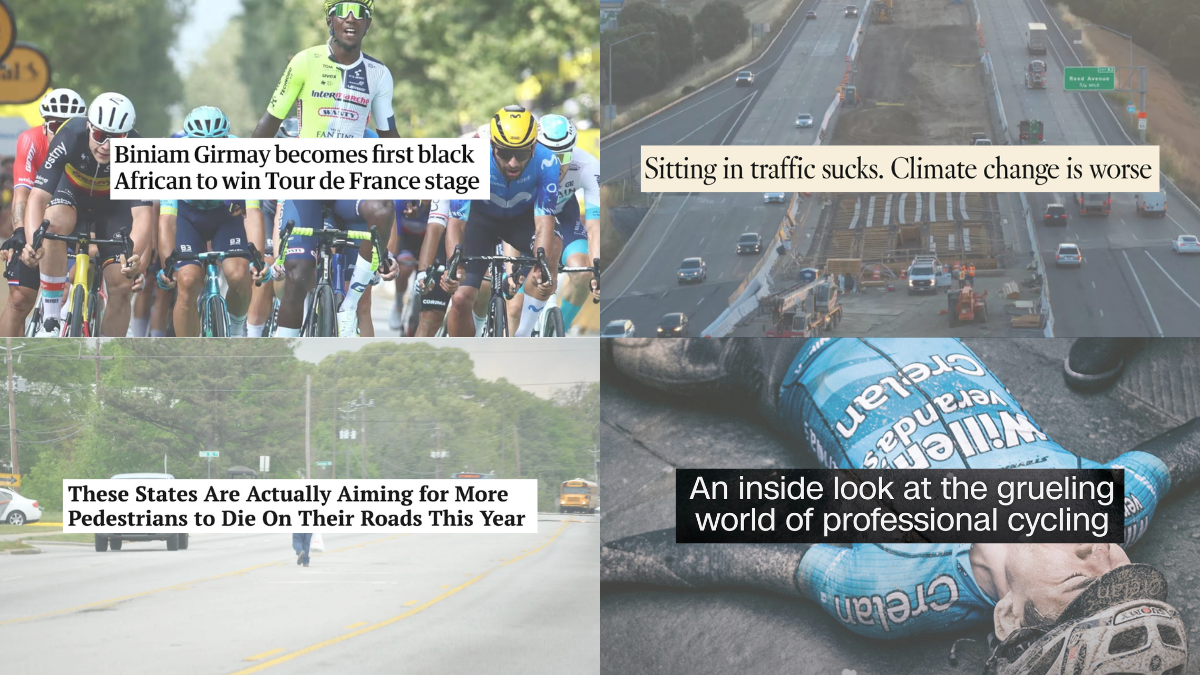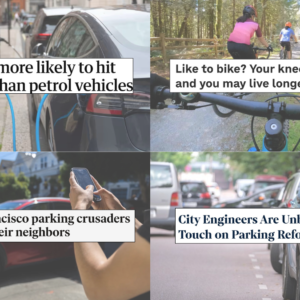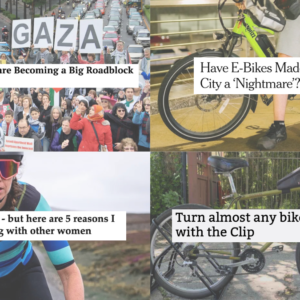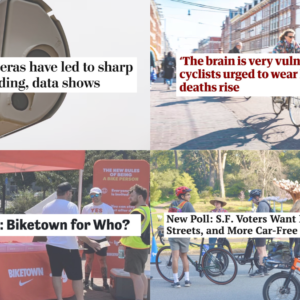Welcome to the week.
Not sure why, but the past seven days were a bit lighter then normal when it came to notable transportation and cycling news.
Hit the brakes: A new rule from the National Highway Traffic Safety Administration that requires cars to have automatic emergency braking is being opposed by lobbyists for automatkers on grounds that it won’t work and “will frustrate or flummox drivers.” (The Verge)
Pain pics: “The Art of Suffering” is a new book by professional cycling photographer Kristof Ramon that takes an inside look at the emotions and pain that define World Tour cycling. (CNN)
Historic stage: The Tour de France is off to a fine start and stage three was special because Eritrean Biniam Girmay became the first Black African rider to win a stage. (The Guardian)
The debate of our lives: It’s wild that in 2024 we still spend billions to widen freeways all across the U.S. One of the reasons is because of how impacts of projects are quantified and a debate over Highway 80 in California is a great illustration of the current conundrum. (L.A Times)
Gaming the system: DOTs can be pretty sneaky with how they manipulate policy in order to line themselves up for federal cash; but fudging pedestrian fatality goals just to not get dinged as much for failing to meet them is a new low. (Streetsblog USA)
Thanks to everyone who sent in links this week. The Monday Roundup is a community effort, so please feel free to send us any great stories you come across.







Thanks for reading.
BikePortland has served this community with independent community journalism since 2005. We rely on subscriptions from readers like you to survive. Your financial support is vital in keeping this valuable resource alive and well.
Please subscribe today to strengthen and expand our work.
From the Streetsblog article: “54 percent of all walkers who die in America lose their lives on rights of way that are under the direct purview of state DOTs, despite the fact that such roads make up just 20 percent of the nation’s total road network.” Wow.
Keeping in mind that all federal stroads including interstates, turnpikes, and US Highways are also under direct state purview, as well as all rural and country stroads (and many urban arterials) in VA, WV, & NC.
Basically, if your town has a “main street”, it’s probably a state-controlled stroad.
If the Feds require you to set and meet a benchmark for pedestrian fatalities in order to get funding, I can’t imagine why anyone would be surprised if they set that benchmark very low. There is gambling in Cassablanca.
I’ll add that the Streetsblog headline is, as usual, completely false.
You’re right, the headline was written for shock value more than to communicate. I think they were reacting to the bureaucratic cynicism of slow walking safety improvements.
Maybe it would be better to apply the penalty to any DOT that fails to reduce fatalities at least 15% annually. That sounds incremental but amounts to over 50% in five years and 80% in ten. The greatest reduction in raw numbers would come in states with the worst safety record.
That would be the way to do it. That is, after a gut-check that you have the strength to stick to your guns when a group of irate senators comes knocking, threatening to cut your safety funding (and maybe your job) if money for their states isn’t reinstated.
That type of approach really can’t work without rock solid political support. Which is probably why it’s not done that way. If I’m a senator, my job is to get money for my state, even if my state-level DOT misses a benchmark or two.